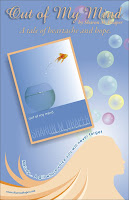 After graduating, I hope to teach grades K-2. I want my students to feel welcomed and safe in the classroom. I want them to know that it is not my classroom, but our classroom. I want them to know that throughout the school year, our class is a place where we will learn and grow together, that we are free to be creative, make mistakes and express our opinions and views with one another. Creating a positive learning environment is very important. My classroom will be a very colorful and inviting place. I want my students to look forward to coming to school, everyday they walk into the class, I want them to be excited and ready to learn and have fun while learning. I want to be a voice of encouragement for my students, I want to inspire to dream and to believe in themselves and to never doubt their capability.
After graduating, I hope to teach grades K-2. I want my students to feel welcomed and safe in the classroom. I want them to know that it is not my classroom, but our classroom. I want them to know that throughout the school year, our class is a place where we will learn and grow together, that we are free to be creative, make mistakes and express our opinions and views with one another. Creating a positive learning environment is very important. My classroom will be a very colorful and inviting place. I want my students to look forward to coming to school, everyday they walk into the class, I want them to be excited and ready to learn and have fun while learning. I want to be a voice of encouragement for my students, I want to inspire to dream and to believe in themselves and to never doubt their capability.  Throughout this semester in EDM310, I have learned about many valuable tools that I will use in my future classroom. One of those tools is blogging. I will definitely blog as a teacher and my students will also have their own blogs, depending on which grade I teach. If I teach Kindergarten, we will have one blog, which will host students work as a class; if I am teaching first or second, my students will have their own blogs. Blogging has been a very important tool used in EDM310, not only are we sharing our blog posts, but we have shared many different projects such as: book trailers, prezis, google presentations, recorded Smartboard lessons, and project-based learning lesson plans. This is the great aspect of blogging, because students will be able to share all of the work they have created throughout the school year, through their class blogs. Blogging is also important in terms of improving writing skills, communicating, and collaborating. Through blogging my students will be able to connect with different people around the world, be it other elementary students, college students, or other teachers. This way their work is taken outside of the classroom walls and they will be able to receive feedback from someone other than me. Blogging is also important, because blogs are like online portfolios. A blog is concrete evidence of what students are learning in class, so when parents are wondering what their child is learning in class, all they would have to do is check out their child's blog and all of their work would be located on their blogs.
Throughout this semester in EDM310, I have learned about many valuable tools that I will use in my future classroom. One of those tools is blogging. I will definitely blog as a teacher and my students will also have their own blogs, depending on which grade I teach. If I teach Kindergarten, we will have one blog, which will host students work as a class; if I am teaching first or second, my students will have their own blogs. Blogging has been a very important tool used in EDM310, not only are we sharing our blog posts, but we have shared many different projects such as: book trailers, prezis, google presentations, recorded Smartboard lessons, and project-based learning lesson plans. This is the great aspect of blogging, because students will be able to share all of the work they have created throughout the school year, through their class blogs. Blogging is also important in terms of improving writing skills, communicating, and collaborating. Through blogging my students will be able to connect with different people around the world, be it other elementary students, college students, or other teachers. This way their work is taken outside of the classroom walls and they will be able to receive feedback from someone other than me. Blogging is also important, because blogs are like online portfolios. A blog is concrete evidence of what students are learning in class, so when parents are wondering what their child is learning in class, all they would have to do is check out their child's blog and all of their work would be located on their blogs.
One of the projects I mentioned above was to create a book trailer. To create book trailers, one needs to have access to either a Mac or an iPad, so they have access to iMovie, which has the book trailer feature. Creating the book trailer was a really fun experience. I had a great deal of fun with it, and can only imagine how much fun my students will have with the feature. I hope to to create more book trailers to share with my future students and have them create their own book trailers featuring their favorite books.
Google sites is a really great resource, and one I plan on using in my classroom. It is free and very easy to use. I will use this resource to create a class webpage. An idea I took from the skype interview with Ms. Cassidy, is to include links to learning activities or games students can play at school or at home. I would also use the site as a way of connecting and staying in touch with parents. I will provide my email, among other ways, that parents will be able to contact me. I will use the site to share newsletters, and update parents on any classroom or school activities.
The Smartboard is another tool, I will take advantage of using in my class. I would create my own Smartboard lesson or use one that is provided through Smart Exchange. The Smartboard is useful because it allows learning to become interactive. I believe the Smartboard will definitely play a role in keeping students engaged during lessons. They will be able to come up to the Smartboard and interact with it and manipulate objects. The Smartboard can also be used as a center in the class, there are many games and activities students can do, either individually or as a small group, via the Smartboard.









